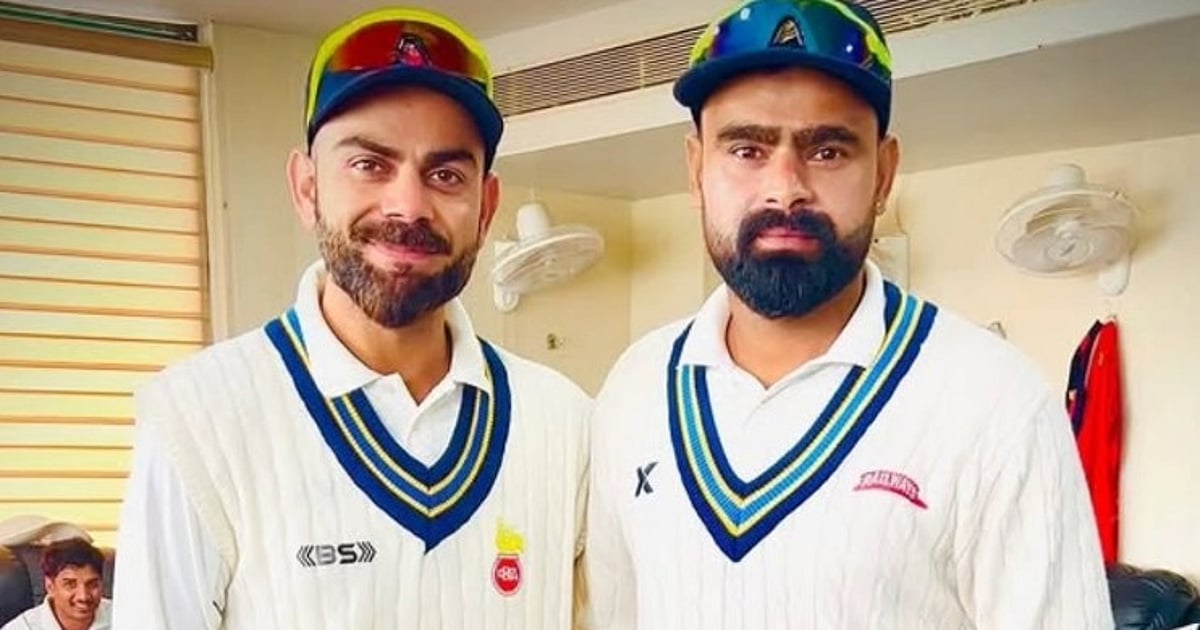 |
|
The recent Ranji Trophy match witnessed an intriguing turn of events, highlighting the sometimes unexpected sources of cricketing wisdom. Virat Kohli, a cricketing legend facing a recent slump in form, made a highly anticipated return to domestic cricket after a 13-year absence. However, his comeback was short-lived, marked by a disappointing performance that ended with his dismissal for a meager 6 runs from 15 balls. The bowler responsible for ending Kohli's innings was the relatively unknown Himangshu Sangwan, a 29-year-old who achieved a feat many seasoned bowlers could only dream of. What makes this dismissal even more remarkable is the source of Sangwan's winning strategy: the team bus driver.
Sangwan revealed in post-match interviews that the team bus driver offered a simple yet effective piece of advice: bowl at the fourth or fifth stump line. This seemingly innocuous suggestion proved to be a game-changer. Kohli, known for his aggressive batting style and tendency to play shots off the front foot, was seemingly caught off guard by this tactic. The strategy exploited a potential weakness in Kohli's game, forcing him into an uncomfortable position and ultimately leading to his dismissal. The success of this seemingly simple piece of advice underscores the importance of subtle tactical adjustments and the often-overlooked value of perspectives outside the usual cricketing circles.
The incident sparked a flurry of discussions among cricket analysts and fans alike. Some lauded Sangwan's ability to execute the plan flawlessly, praising his discipline and execution. Others focused on the unconventional nature of the advice, highlighting the often-unappreciated contributions of support staff in professional sports. The bus driver's unexpected role in a crucial dismissal further emphasizes the interconnectedness of a team's success. Every member, no matter their official role, can contribute valuable insights and influence the outcome of a game. This incident serves as a reminder that even seemingly small details can have a significant impact on the course of a match, highlighting the importance of observation, communication, and a willingness to consider unconventional strategies in the high-stakes world of professional sports.
Kohli's underwhelming performance further fueled the ongoing debate surrounding his form. Despite his immense talent and experience, Kohli has undeniably struggled to replicate his past successes recently. His brief appearance in the Ranji Trophy match only served to intensify the scrutiny on his current batting form and the need for adjustments in his approach. While the dismissal itself might seem like a small incident, it provides a compelling case study for coaches, players, and analysts alike. It showcases the effectiveness of carefully considered bowling plans, the importance of exploiting an opponent's weaknesses, and the unexpected value of advice from outside sources.
The story of Sangwan and the bus driver offers a refreshing counterpoint to the often-glorified narratives of individual brilliance in cricket. It reminds us that success is often a collaborative effort, a result of meticulous planning, astute observation, and a team's ability to learn from unexpected sources. The simple yet effective advice provided by the team bus driver is a testament to the cumulative knowledge and shared experience within a sports team. It serves as a cautionary tale for even the most celebrated players, emphasizing that adapting to new strategies and exploiting weaknesses is crucial for maintaining success in competitive sports. Finally, the narrative also highlights the unpredictable nature of cricket and how even the slightest change in approach can dramatically alter the outcome of a match.
